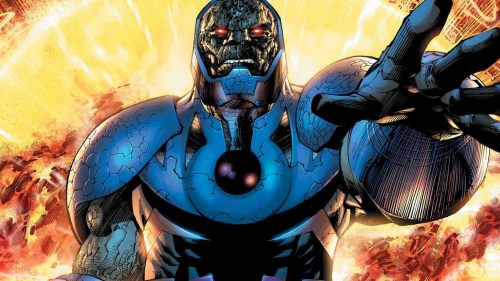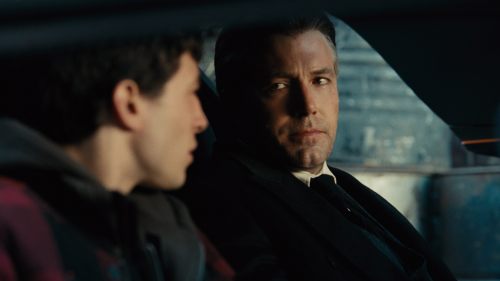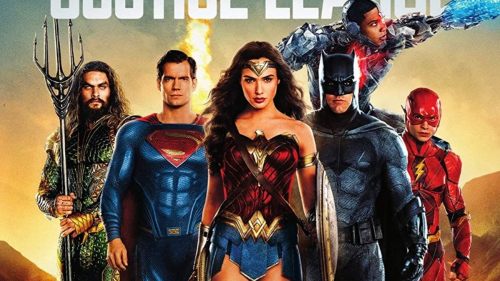The Snyder Cut Is Not What You Think It Is
The Snyder Cut is coming, and we’re all going to have to deal with it. Long rumoured and demanded by a deafeningly vocal cadre of DC Comics fans, a longer version of JUSTICE LEAGUE will become a major streaming event by Warner Bros. next year, as an attempt to secure subscriptions to the recently-launched HBO Max. It’s a big, expensive gamble, and it’s made fans all around the Reddit celebrate that they won their war.
I’m not going to write about the sense of entitlement that leads to such petitions. It's an exhausting subject, and honestly I’ve written that article many times before. I also won’t write about the precedent set by Warner Bros. caving to whiny fan demands. Not because it’s not a horrible precedent - it is - but because the fans were never actually demanding what they thought they were demanding. What they were demanding never existed in the first place.
The story has always been some variation on the same thing. Zack Snyder’s JUSTICE LEAGUE is out there, locked away in either a studio vault or Snyder's own hard drive, publicly supplanted by an inferior version partially reshot by Joss Whedon. It’s pretty much ready to go, and the studio only lacks the courage to let the century’s greatest artist’s greatest achievement bring peace to the world. The Snyder Cut movement has always been predicated on the existence of this movie, running at three hours, or four, or six, depending on who you ask. But that movie has never existed - not in the way fans seem to think it has.
At issue is the nature of the editing process itself. Movies don't instantly turn from raw footage into a final release, like a four-hour YouTube rant might - they go through many iterations. The first is the “assembly cut” - literally every scene assembled into a timeline, often without careful take consideration, thrown together purely in order for the director to get a broad overview of the movie as it was shot. The closest comparison to an assembly cut isn’t even a first draft - it’s more like what writers call a “vomit draft,” just spraying everything out on paper so it can later be shaped into something resembling an actual first draft. Any time you see someone claiming that an “early cut” of a movie was three or more hours long, they’re probably referring to the assembly cut or something not far from it.
Crucially, assembly cuts are almost always terrible. They’re poorly-paced; performances aren't honed properly; storylines are confusing or poorly-told. You never really know if your movie works until you get it into editing, and viewing the assembly cut is often the first time you realise that, shit, it doesn't. It's one of the most-dreaded stages of making a movie. Only afterwards, following a period of self-hatred, do you trim, cut, and rearrange scenes; select and/or combine performance takes; shift dialogue around; refocus the story; remove entire characters or subplots; record or shoot new material to clarify or streamline story points and tighten the whole film up for pacing purposes. And that’s before you even start thinking about sound mixing, visual effects, colour grading, musical score, or anything else of the sort.
Based on the film’s production timeline, what likely existed of “The Snyder Cut” is a workprint not that far removed from an assembly, made up of material from the original April to October 2016 shoot. That tracks with the studio’s commitment of $20 million - for which you could just about produce three THE INVISIBLE MAN (2020)s in their entirety - toward the completion of editing and post-production on the film. Indeed, THR reports that Snyder's cut as it existed before this decision was “a semi-unfinished work, with no visual effects, no postproduction.” Producer Charles Roven has said "80, 85 percent of the movie is what was originally shot," while Snyder says only one-fourth of his footage was used. Given how this process (and mathematics) works, both statements are likely true. Had Snyder finished his film, his figure would probably be closer to a third.
Rumours abound, but we simply don’t know whether JUSTICE LEAGUE would have been better or worse had Snyder completed it as originally planned. But the pre-existing “Snyder Cut” was likely a terrible viewing experience, and honestly, Snyder would probably agree. Even if it was "unwatchable," as has been suggested, that's not necessarily a problem, as it was a working document - something Snyder likely would have reworked and reshot himself, had a family tragedy not ended his involvement in the project.
A popular belief amongst movie fans is that a longer cut automatically represents something closer to the director’s vision, a belief encouraged by filmmakers like Ridley Scott and James Cameron presenting “Director’s Cuts” as the definitive versions of their work. But that’s not always the case; many directors prefer the shorter versions of their films. The late Geoff Murphy released a “Redux” version of his masterpiece UTU a few years back that was several minutes shorter than its original version - simply because he thought the pacing lagged in places. Peter Jackson makes a point of not calling his films' extended editions "director’s cuts," because they aren’t - those would be the comparatively snappier and more efficient theatrical cuts. Ultimately, every movie has a running time that is right for it, and aiming for “as long as possible” is a terrible direction to take. So is aiming for “as short as possible,” but that’s not what fans demand in their petitions.
Following the “success” of the Snyder Cut campaign, calls have arisen to will further nonexistent versions of movies into being, to better represent their creators' original intent: David Ayer’s SUICIDE SQUAD, Josh Trank’s FANTASTIC FOUR, and most inexplicably a four-hour cut of REVENGE OF THE SITH. That one’s most ridiculous because SITH was written, directed, and produced independently, with no studio involvement, and while its released version can be called many things, "a compromised vision" is not among them. George Lucas did not want to release a four-hour version of his movie, though it may well have existed early in editing. He wanted to release the version he released. Because it was better.
At the end of all this, I’m genuinely curious to see what Snyder puts together, whether it emerges as a megafeature or a multipart miniseries. Will it play out as a risible Frankenstein project, with attempts at focusing the storytelling diluted by the whims of quantity-obsessed fanatics? Will it somehow pull off a miracle and meet the stratospherically high expectations of fans convinced they were denied an all-time masterpiece? Or more likely, will it fall somewhere in between - just a movie, as it was always going to be? Few will be able to assess it fairly, so it likely doesn't matter. Regardless: we sure live in interesting times for fans of mass-produced four-quadrant studio product.



